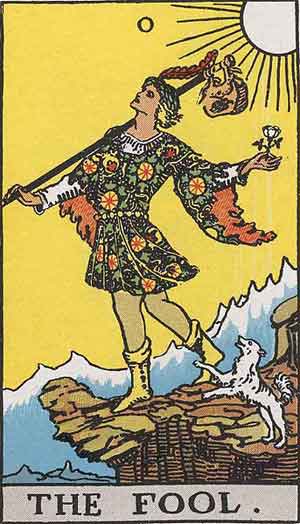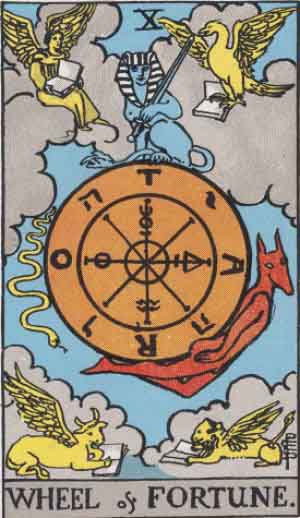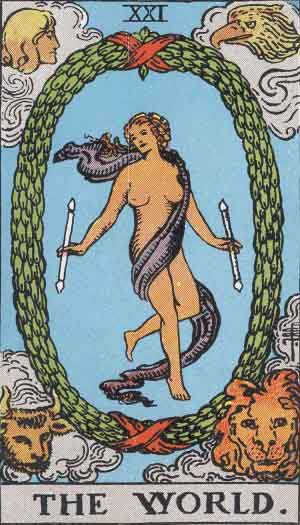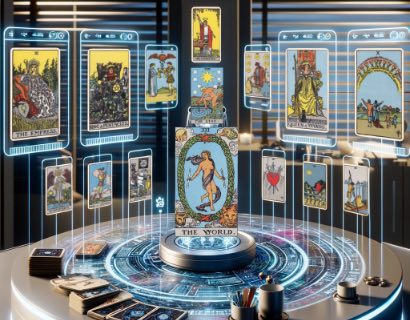Tarot Tutorial
Learn Tarot Card Reading
 Tarot cards are popularly thought of as a tool used by gifted psychic's for the purpose of predicting the future, removing un-certainty from life and comforting those seeking reassurances about finding love, wealth, health and happiness.
Tarot cards are popularly thought of as a tool used by gifted psychic's for the purpose of predicting the future, removing un-certainty from life and comforting those seeking reassurances about finding love, wealth, health and happiness.
You don't have to be a gifted psychic to use Tarot cards successfully, anyone can learn how to use them effectively. Everyone is born with intuition, some of us have a keener sense of it than others and Tarot can greatly improve your intuition and develop your psychic ability which everyone has but very few know how to use.
There is nothing magical about the cards themselves, although many who practice Tarot like to "cleanse" their cards, keep them wrapped in purple silk or not let anyone else touch them. This reverence and ceremony towards the cards, whether it is needed or not, does serve to remind us that this is a spiritual undertaking and we must respect the advice they channel and not abuse the act of reading by overly using the cards or applying them to trivial matters.
Tarot is like having a window to your soul. Most religions believe we have a higher self, a watcher, a helper an immortal part of us which knows the future and sometimes tries to guide us. The most common form of communication we receive from our all knowing other self is through our dreams.
Have you ever had a dream that was more vivid, more real than regular dreams? The symbology of our dreams is closely linked to the symbology of Tarot and learning Tarot will give you greater insight when interpreting dreams. This symbology is in the 4 Elements of Water, Fire, Earth & Air. To begin to learn Tarot you must first learn what the 4 elements are, where they come from and what they mean to us.
Just as Tarot takes much of it's symbology from the 4 classical elements so does it also take much of it's Symbology from Numerology.
Once an understanding of the symbology of the elements and numerology of Tarot are grasped, greater insights into the meanings of these cards can be found without needing to reference literature.

Choosing a Tarot Deck
For a Tarot beginner you must buy your own tarot cards! Tarot is about intuition. Interpreting the feelings you get from the symbology in it's images. So the deck you use must be one that appeals to you. It's a very personal choice and not for anyone else to make for you even though they mean well and want to give you a gift. You will know which deck is for you when you see it. Once you have become competent with using a Tarot deck of your own choice then try experimenting with other decks to compare symbology and results.
The Spread
Tarot requires a question which should be foremost in your mind when you are shuffling, laying out and picking cards. Do not ask trivial questions like "I'm I looking my best today?" or "What should I have for dinner?". Often in Tarot you will find that the cards will ignore your question and tell you what you need to know, not what you want to know. For example if you ask a question about money and the cards that are drawn are mostly Cup cards, The Lovers etc then the Tarot is trying to tell you something more important, about a relationship, than your question. This is another reason for learning The Elements of Tarot, to be able to recognise the theme of what you are being told in the answer. The answer should match the elemental category of the question if you are being given a straight answer.
There are 2 ways to do Tarot spreads. You can either do a structured spread, like the very popular Celtic Cross, or just select a sequence of cards and stop when you feel the answer you have asked has been told. A structured spread may use a significator, a card you take from the deck that represents a person or situation that you want to ask a question about. This may anchor the Tarot to sticking to the subject.
The unstructured spread is well suited to a beginner and professional alike. It allows more freedom for the Tarot to "talk freely". As previously mentioned Tarot may not answer the question you ask but point out something more important that you should be focusing on. You should pay attention to the numerology of the sequence of the cards. The 1st card you will pick will give the basic "yes" or "no", if the question is about a possible job, or lover etc this first card will indicate the outcome more so than any subsequent cards. The cards that follow will give you an explanation for the answer in the first card.

Reading the Cards
A good practice to adopt as a beginner is to make notes on each spread you do. Take a photograph too if you have a camera, or smart phone, handy. If you rely on books to read and interpret the messages from Tarot spreads you will likely have a low level of accuracy in your results. The Art of Tarot Divination is in learning to use your intuition to see the story that Tarot is speaking through the images presented to you. On first looking at the spread just say out loud what you see in the pictures, imagine they are like a comic book story but without any words. Book's will give you the standard meaning of each card and/or what the common theme has been for the author with the card. Compare Tarot books on specific cards and you will soon see a bewildering array of interpretations for each card. This can be an information overload when all the information you need is in front of you in the cards.
If the story doesn't come to you, relax, try not to over analyse the spread. Clear your mind of all thought and just look at the story in front of you. Allow the images on the cards to stimulate your sub-concious, if something pops into your head go with it and see where it takes you. Having learned the Symbology of the 4 Elements and the Numerology of Tarot the minor arcana should be easier to feel your way around. The Major Arcana is much more visually rich and powerful. An important distinction between the 2 arcana's to remember is that the minor often refers to problems or situations that you can avoid, work around or through. The Major arcana more often refers to situations out of your control, unavoidable turns that life will throw in your path. Only after you have allowed yourself to see the cards with a clear mind, without pre-conceptions and have made a first interpretation can you then relate back to literature etc to check for additional insights. Your first gut feeling you will find to be the most accurate.
Unless you live a fast life of high adventure the more dramatic cards seen regularly will have a simpler meaning within the context of your question. For example if you are doing a Tarot spread for a day or week you might see the 4 of Coins/Pentacles, The Chariot and the 5 of Swords. This could be warning you that not spending money on repairing your car will lead to more serious problems. Try not to overly complicate the message, this is why the Death card doesn't mean you or anyone else is going to die. Once you tune into your intuition you will learn to feel the weight of the message and know if the message is on minor or major changes or issues to come.
© Phuture Me Ltd 2010. All rights reserved.
